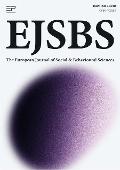
The European Journal of Social & Behavioural Sciences
Online ISSN: 2301-2218
European Publisher
The Sign Language and Spoken/Written Language of Bilingual Method for Hearing-Impaired Children in Pre-Schools in Latvia
Table 1: The positions of the Bilingual Learning Method according the author of the publication, I. Zaiceva
| Positions | Directions of learning activity | Use/application |
| Specifics | correspondence to the individual traits of the child;correspondence of the contents;skill development, enforcement of acquisitions, mastering knowledge | Use of language:in the respective situation;the most appropriate language;corresponding to the capabilities of the child. |
| Contents | Programs:development of the sign language;development of the spoken/written language;reading from the lips;developing the pronunciation of the spoken/written language;developing the existing hearing perception;development of mathematic perception; | Use of the levels of acquisition:in the sign language;in spoken/written language;in the sign language and in the spoken/written language;cognitive cognition. |
| Method | Classification of the methodTasksElements of the learning contentsRequirements for the choiceMaterials of the method | Use of materials:In the sign language;In the spoken/written language;In the sign language and in the spoken/written language. |
| Gains | SkillsAcquisitionsKnowledge | Socio-cultural situation;Cognitive cognition process;Psycholinguistic:In the sign language,In the spoken/written language. |
